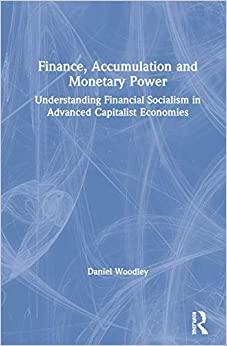Question
1. You have just invested in a portfolio of three stocks. The amount of money that you invested in each stock and its beta are
1. You have just invested in a portfolio of three stocks. The amount of money that you invested in each stock and its beta are summarized below.
| Stock | Investment | Beta | |||
|---|---|---|---|---|---|
| A | $182,000 | 1.48 | |||
| B | 273,000 | 0.59 | |||
| C | 455,000 | 1.29 | |||
Calculate the beta of the portfolio and use the Capital Asset Pricing Model (CAPM) to compute the expected rate of return for the portfolio. Assume that the expected rate of return on the market is 16 percent and that the risk-free rate is 8 percent. (Round beta answer to 3 decimal places, e.g. 52.750 and expected rate of return answer to 2 decimal places, e.g. 52.75%.)
2. Following are the independent situations.
Carol recently invested in real estate with the intention of selling the property one year from today. She has modeled the returns on that investment based on three economic scenarios. She believes that if the economy stays healthy, then her investment will generate a 30 percent return. However, if the economy softens, as predicted, the return will be 10 percent, while the return will be -25 percent if the economy slips into a recession. Assume the probabilities of the healthy, soft, and recessionary states are 0.4, 0.3, and 0.3, respectively. Calculate the coefficient of variation for the investment. (Round answer to 5 decimal places, e.g. 0.07680.)
| Coefficient of variation | enter the coefficient of variation rounded to 5 decimal places |
Ruth is considering investing in a company's stock and is aware that the return on that investment is particularly sensitive to how the economy is performing. Her analysis suggests that four states of the economy can affect the return on the investment. Use the following table of returns and probabilities to determine the coefficient of variation for the investment. (Round answer to 5 decimal places, e.g. 0.07680.)
| Probability | Return |
| Boom | 0.2 | 25.00% |
|---|---|---|
| Good | 0.1 | 15.00% |
| Level | 0.1 | 10.00% |
| Slump | 0.6 | -5.00% |
| Coefficient of variation | enter the coefficient of variation rounded to 5 decimal places |
Steven would like to invest in gold and is aware that the returns on such an investment can be quite volatile. Use the following table of states, probabilities, and returns to determine the coefficient of variation for the investment. (Round answer to 5 decimal places, e.g. 0.07680.)
| Probability | Return |
| Boom | 0.1 | 37% |
|---|---|---|
| Good | 0.2 | 19% |
| Ok | 0.3 | 11% |
| Level | 0.2 | 7% |
| Slump | 0.2 | -13% |
| Coefficient of variation | enter the coefficient of variation rounded to 5 decimal places |
Step by Step Solution
There are 3 Steps involved in it
Step: 1

Get Instant Access to Expert-Tailored Solutions
See step-by-step solutions with expert insights and AI powered tools for academic success
Step: 2

Step: 3

Ace Your Homework with AI
Get the answers you need in no time with our AI-driven, step-by-step assistance
Get Started


